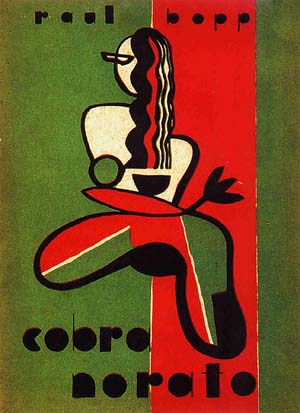Rhizomes, 30: Quantum Possibilities: The Work of Karen Barad (2016)
Filed under journal | Tags: · epistemology, feminism, knowledge production, materialism, ontology, philosophy, physics, quantum physics, queer, science
“In the past decade, Karen Barad’s oeuvre, especially the voluminous Meeting the Universe Halfway (2007), has attracted increasingly great attention in feminist philosophy, cultural studies and feminist science studies. Alongside scholars like Elizabeth Wilson and Vicki Kirby, she has spearheaded the recent feminist exploration of complex scientific issues, and presented new less categorical ways of thinking ontology and epistemology (or indeed onto-epistemology as she refers to it) as a result. Many of the terms introduced and developed by Barad, such as ‘intra-action’, ‘diffraction’ and ‘agential realism’ have shifted the standard metrics of knowledge production and her theories have inspired animated discussion in emerging critical strands as varied as the new materialism in feminism, object oriented ontology, post- and transhumanism, speculative realism, environmental and digital humanities, among others. In a critical climate that is becoming increasingly ‘Baradian’, this special issue on the ‘Quantum Possibilities’ of Barad’s work does not merely aim to reflect the engagements currently being made within these fields, but extends Barad’s ethos of continually rethinking our critical concepts and methodologies ‘without taking these distinctions to be foundational or holding them in place’. Creating ‘diffractive’, or new ‘quantum level’ means of reflecting on, and engaging with Barad’s work, the essays collected here stake out a new set of directions for their wide array of disciplinary identities.”
With essays by Joseph Rouse, Evelien Geerts and Iris van der Tuin, Rebekah Sheldon, Kathrin Thiele, Hanna Meißner, Andie Elizabeth Shabbar, Ulf Mellström, Martin Savransky, Dorothea Olkowski, Graham Harman, Levi R. Bryant, Rick Dolphijn, Katie King, Ino Mamic, and Myra J. Hird.
Edited by Karin Sellberg & Peta Hinton
Published 12 July 2016
Open access
ISSN 1555-9998
Diana Taylor with Lorie Novak (eds.): Dancing with the Zapatistas: Twenty Years Later (2014)
Filed under book | Tags: · activism, art, social movements, zapatistas

“Dancing with the Zapatistas brings together scholars, artists, journalists, and activists to respond to the continuing work of the Zapatistas twenty years after their insurrection in 1994. Available online, this open access multimedia digital book includes essays, photo essays, interviews, and spoken word and theatrical performances that offer insights into the workings of the Zapatista Council on Good Government; the murals in the Caracoles; the Escuelita; Subcomandante Marcos; and Zapatista music and celebrations. The book discusses how Zapatista and Mayan thought permeate the daily life of the Zapatistas, from the way in which their languages configure collective identity to how music affirms the Zapatistas’ conception of history. Ultimately, Dancing with the Zapatistas considers how the Zapatistas work with those outside their movement while covering how they have influenced the practices of activists and artists around the globe.”
Contributors: Brian Batchelor, Henry Castillo, Elvira Colorado, Hortencia Colorado, María Luisa de la Garza, Ricardo Dominguez, Jennifer Flores Sternad Ponce de León, Guillermo Gómez-Peña, Marta Molina, Lorie Novak, Julio Pantoja, Claudia Isabel Serrano Otero, Jacques Servin (a.k.a. Andy Bichlbaum), Alexei Taylor, Diana Taylor, Luis Vargas-Santiago, Moysés Zuñiga.
Publisher Duke University Press, with the Hemispheric Institute of Performance and Politics at New York University, 2014
Open access
via Gabriella Coleman
Raul Bopp: Cobra Norato (1931–) [BR-PT, EN]
Filed under poetry | Tags: · anthropophagy, avant-garde, brazil, modernism, poetry

“Raised in the south of Brazil, trained as a lawyer in Recife and Rio, and seasoned as a diplomat in Japan and the United States, Raul Bopp found his true subject in Manaus, where he discovered what he insisted was the authentic Brazil. Bopp brought to the early Modernist movement in Brazil a fascination with the folklore, Indian languages, and culture of the vast hinterland of the Amazon basin. As a contributor to the magazine Revista de Antropofagia (Anthropophagical Review) in the 1920s and 1930s, Bopp defined the concerns of what he called the “Cannibalist school” of poetry. ‘Anthropophagical’ in their appropriative and assimilative relation to European experimental writing, the theories of Bopp and Oswald de Andrade further associated them with the tenets of the cosmopolitan/indigenist “Verde e Amarelo” writers, who took their name (“The Green and Yellow”) from the colors of the Brazilian flag.
His long poem Cobra Norato (The Snake Norato or, as translated by Renato Rezende, Black Snake) was written in 1928 and published in its first version in 1931. In it Bopp embodies his primitivist, mystical sense of the life of Brazil’s interior, whose energy he and the other “Cannibalists” proposed as an alternative to the compromising forces of modern urban life. Skeptical, impressionistic, rhythmically complex, and erotically playful, the poem moves at times like a dream or a fairy tale. Its politics, however, are humanitarian and ecologically alert to the dangers o fexploiting the rain forest and its indigenous cultures. In later editions, Bopp softened the bluntness and difficulty of the poem’s diction, making the tone less austerely visionary and more tender. In his later poems, in his criticism, and in his several volumes of memoirs, Bopp continued his Modernist advocacy of Amazonian and Afro-Brazilian folklore as sources of energy and psychic survival.” (Source)
First published in Rio de Janeiro, 1937.
Cobra Norato / Black Snake (BR-Portuguese/English, trans. Renato Rezende, 1996, excerpts, HTML)
Cobra Norato (English, trans. Chris Daniels, 2008)

